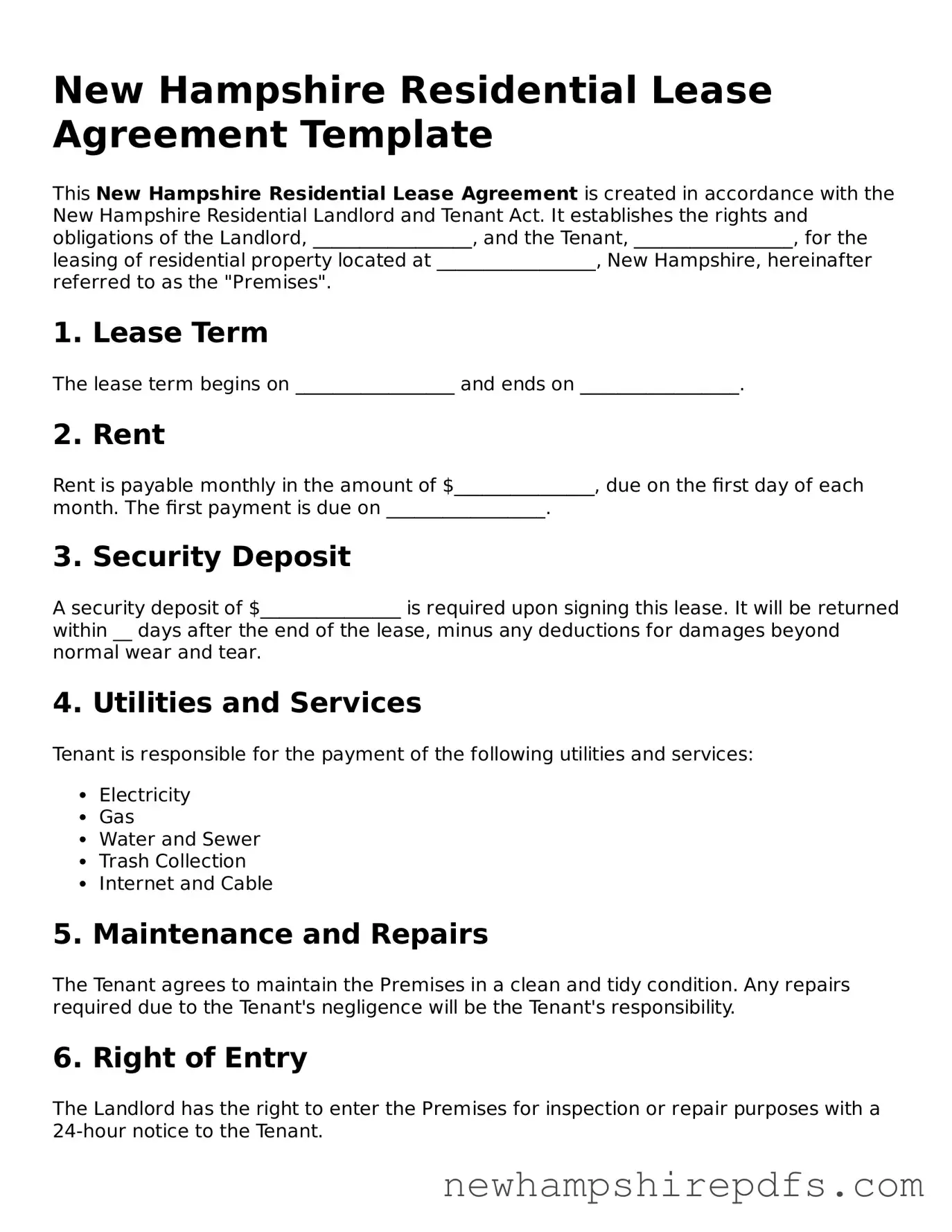New Hampshire Residential Lease Agreement Template
This New Hampshire Residential Lease Agreement is created in accordance with the New Hampshire Residential Landlord and Tenant Act. It establishes the rights and obligations of the Landlord, _________________, and the Tenant, _________________, for the leasing of residential property located at _________________, New Hampshire, hereinafter referred to as the "Premises".
1. Lease Term
The lease term begins on _________________ and ends on _________________.
2. Rent
Rent is payable monthly in the amount of $_______________, due on the first day of each month. The first payment is due on _________________.
3. Security Deposit
A security deposit of $_______________ is required upon signing this lease. It will be returned within __ days after the end of the lease, minus any deductions for damages beyond normal wear and tear.
4. Utilities and Services
Tenant is responsible for the payment of the following utilities and services:
- Electricity
- Gas
- Water and Sewer
- Trash Collection
- Internet and Cable
5. Maintenance and Repairs
The Tenant agrees to maintain the Premises in a clean and tidy condition. Any repairs required due to the Tenant's negligence will be the Tenant's responsibility.
6. Right of Entry
The Landlord has the right to enter the Premises for inspection or repair purposes with a 24-hour notice to the Tenant.
7. Restrictions
The following restrictions apply to the Tenant:
- No pets allowed without prior written agreement.
- No subletting or assignment of the lease without the Landlord's written consent.
- No illegal activities to be conducted on the Premises.
8. Termination
This lease can be terminated by either party with a written notice __ days prior to the intended termination date.
9. Govering Law
This agreement shall be governed by and construed in accordance with the laws of the State of New Hampshire.
10. Agreement
By signing below, the Landlord and Tenant agree to the terms and conditions of this New Hampshire Residential Lease Agreement.
Landlord's Signature: _________________ Date: _________________
Tenant's Signature: _________________ Date: _________________
